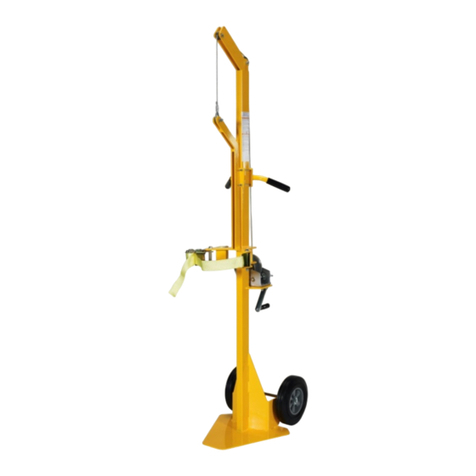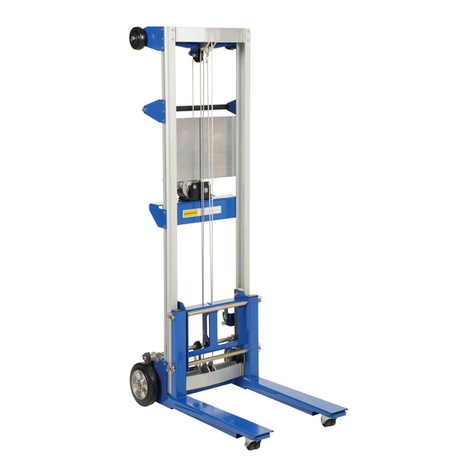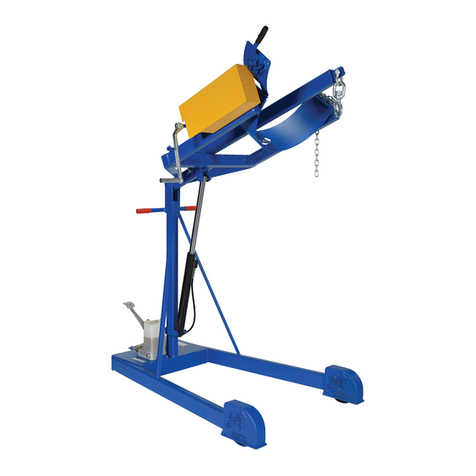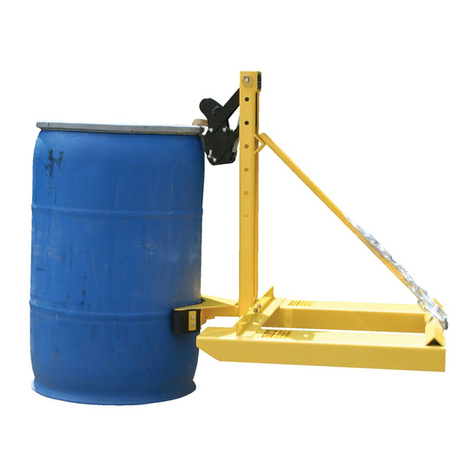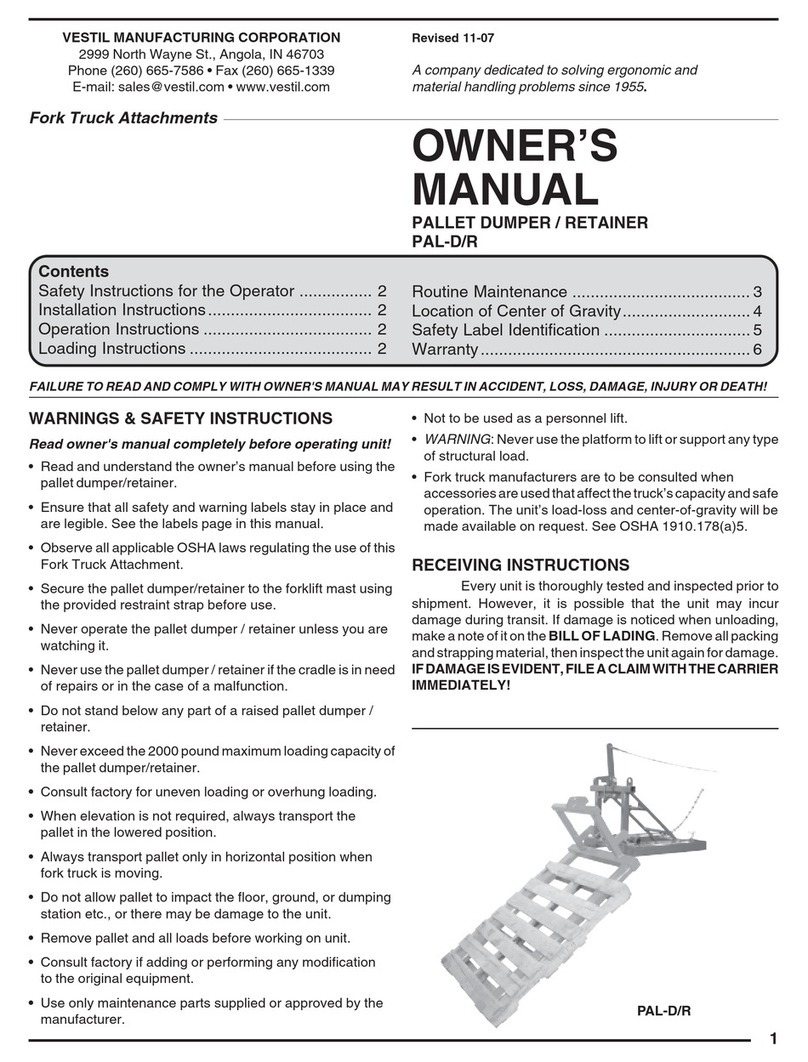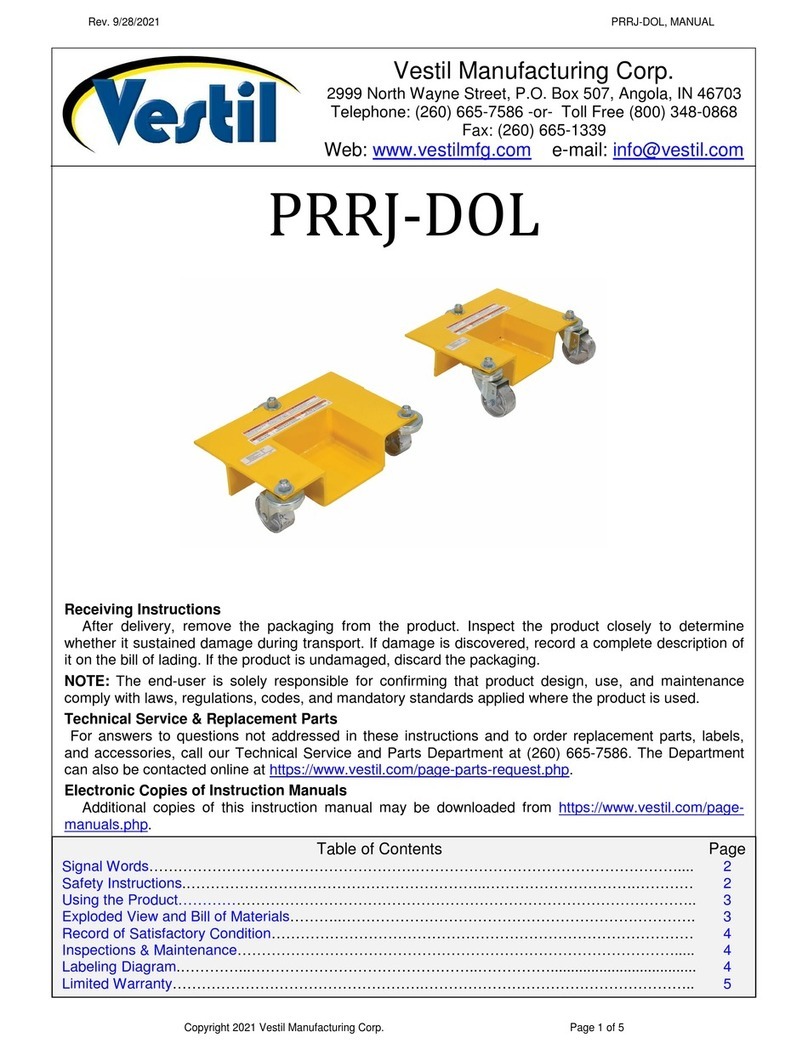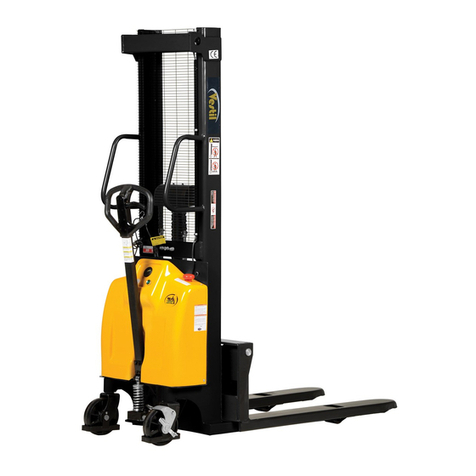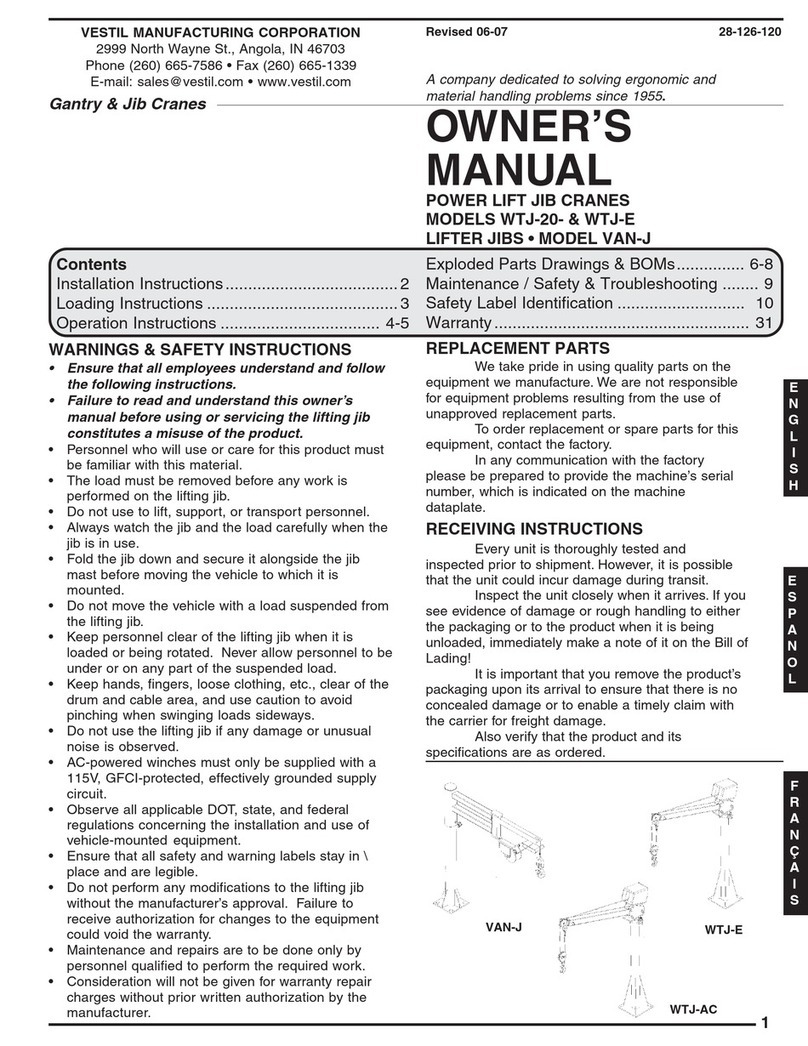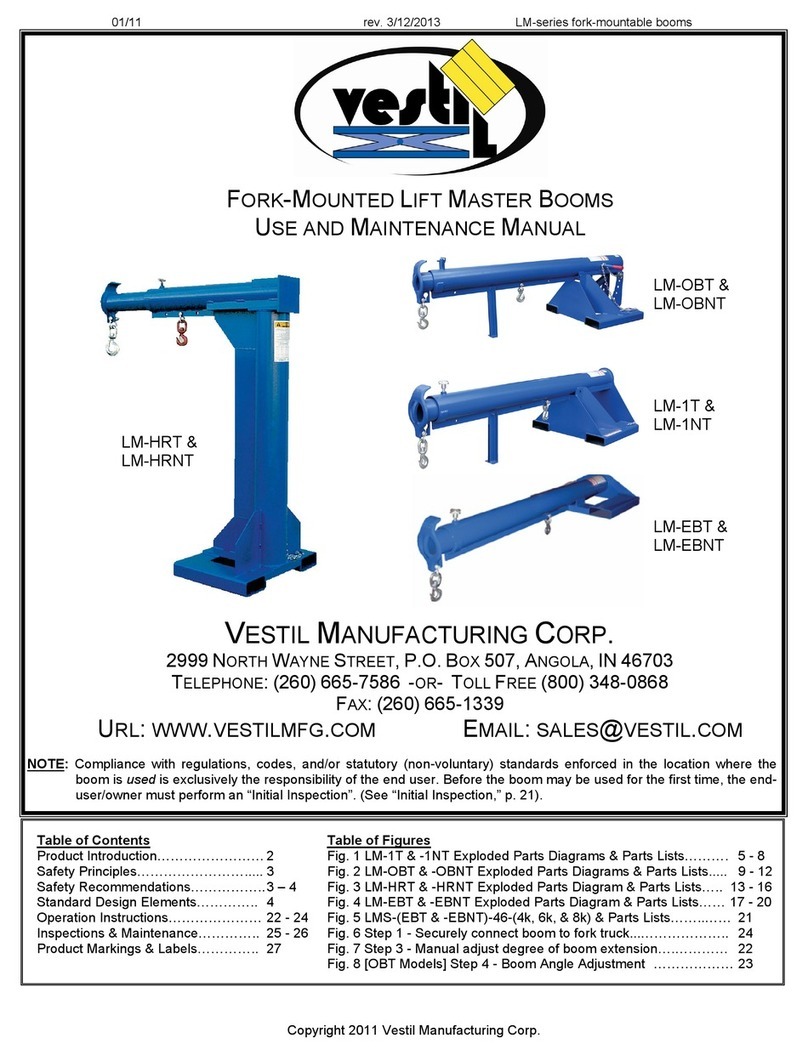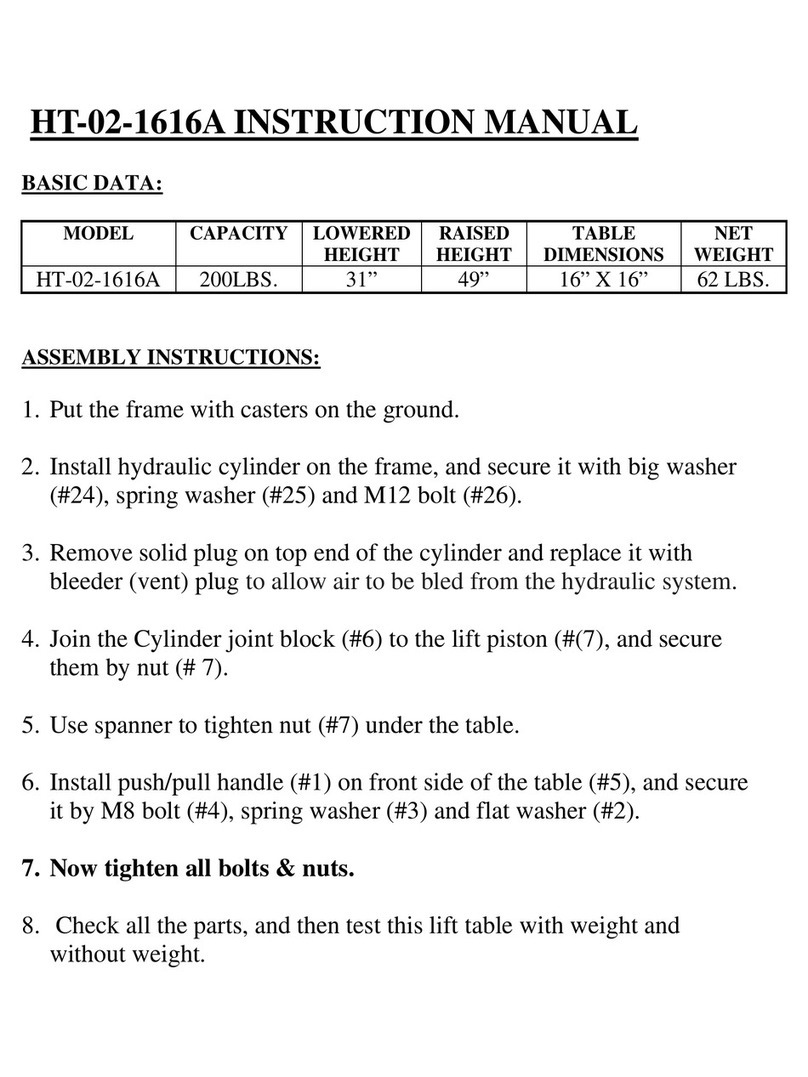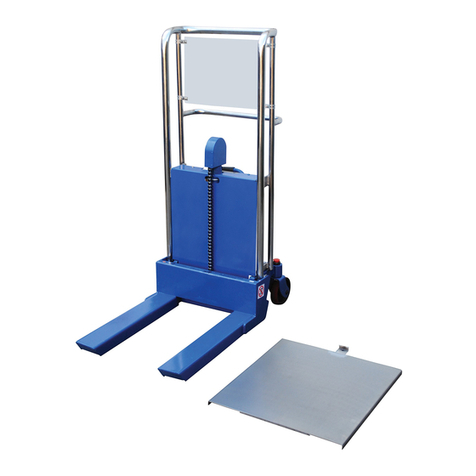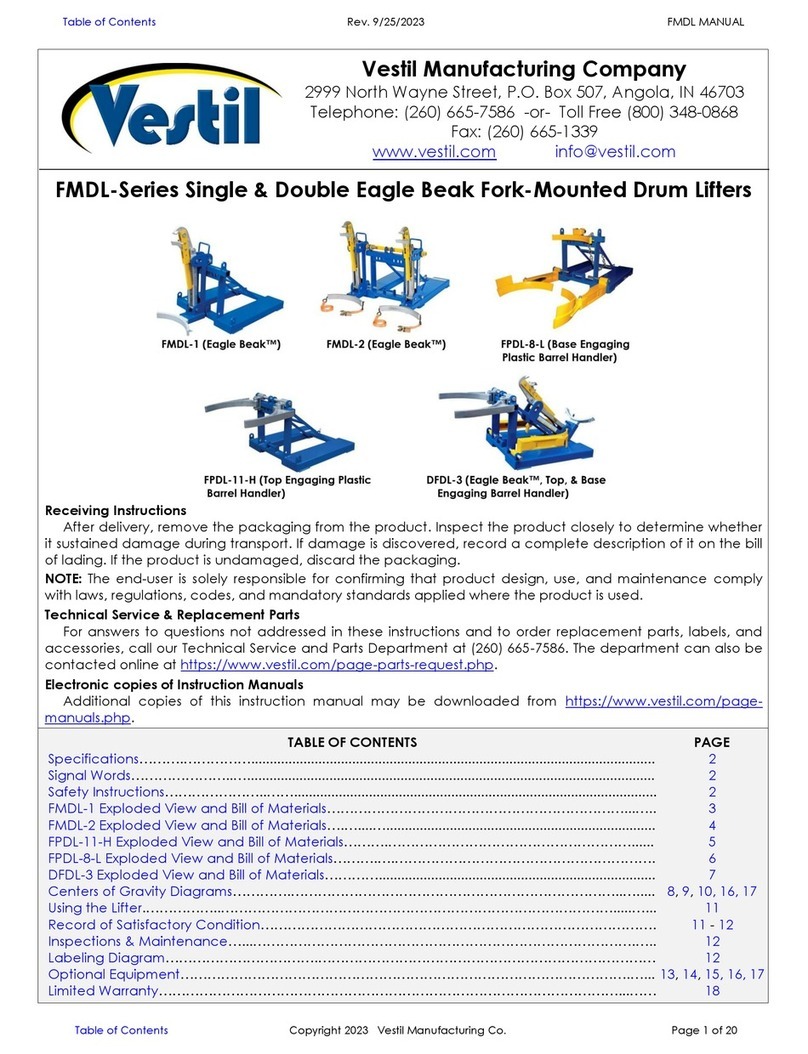
Table of Contents Re v. 2/25/2019 PMPS MANUAL
Table of Contents Copyright 2019 Vestil Manufacturing Corp. Page 2 of 17
Signal Words:
This manual classifies personal injury risks and situations that could lead to property damage with SIGNAL
WORDS. A safety message appears with a signal word that describes an improper/dangerous use of the product.
The signal word indicates the seriousness of the injury that could result from the described use.
Identifies a hazardous situation which, if not avoided, WILL result in DEATH or SERIOUS
INJURY. Use of this signal word is limited to the most extreme situations.
Identifies a hazardous situation which, if not avoided, COULD result in DEATH or SERIOUS
INJURY.
Indicates a hazardous situation which, if not avoided, COULD result in MINOR or MODERATE
injury.
Identifies practices likely to result in product/property damage, such as operation that might
damage the product.
Hazards:
Vestil str ives to identify all hazards associated with the use of its products. However, material handling is
dangerous and
no manual can address every risk. The most effective means for preventing accidents is for the
end-user to exercise
common sense and sound judgment whenever using this product.
If this product is used or maintained improperly serious personal injuries or death might result.
ALWAYS use the product properly.
•Read and understand the entire manual before assembling, using or servicing the product.
•Read the manual to refresh your understanding of proper use and maintenance procedures.
•DO NOT attempt to resolve any issue with the product unless you are both authorized to do so and certain that
it will be safe to use afterwards.
•DO NOT modify the product in any way. Unauthorized modifications might make the lifter unsafe to use and
automatically void the Limited Warranty on p. 17.
•DO NOT exceed the (4,000 lb./1,818.2 kg) capacity, i.e. do not attempt to lift more than 4,000 lb.
•Inspect the product before each use. Check the lifter for damage, such as: 1) Cracked, broken or deformed
load-bearing members (forks, fork carriage, mast, wheels, and frame); 2) cracked welds; 3) corrosion or severe
wear; 4) damage to the hydraulic system including leaks in of any part of the cylinder, hoses, reservoir, etc.).
Remove the product from service if damage is discovered. Replace each part that is not in normal condition. DO
NOT use the product until it is fully restored to normal condition. ONLY use manufacturer-approved replacement
parts.
•Cycle the forks all the way up and all the way down. While cycling the forks listen for unusual sounds. Watch
the forks, carriage, cylinder, and carriage rollers for unusual movement. If you discover a malfunction, remove
the unit from service. Notify your supervisor & maintenance personnel about the issue(s). In the event that part of
the hydraulic system is damaged, AVOID contact with pressurized hydraulic oil (leaking from a ruptured hose, for
instance). High pressure oil easily punctures skin and can cause gangrene.
•DO NOT use the lifter unless all machine guards (e.g. the expanded metal mast guard and formed wheel
guards) are in place.
•This product is NOT a personnel lift. DO NOT use it to lift or transport people.
•DO NOT walk or stand beneath the forks at any time.
•DO NOT leave the pallet handler unattended while it is loaded. ALWAYS completely lower the forks until the
load is entirely supported by the ground before leaving the lifter unattended.
•ONLY transport loads with the forks no higher than necessary to support the load and avoid obstacles.
•DO NOT continue to push the “UP” button on the hand control if the forks do not respond. Remove the unit
from service and report the problem to maintenance personnel.
•Always lift pallets properly. Drive forward until the edge of a pallet contacts the heels of the forks.
•ONLY use this lifter on even, level ground.
•NEVER change the setting of the pressure relief valve.
•ALWAYS carefully watch the pallet handler and the load while lifting and transporting loads.
•DO NOT use this device UNLESS all labels are in place, readable, and undamaged. See Labeling Diagram on
p. 16.


